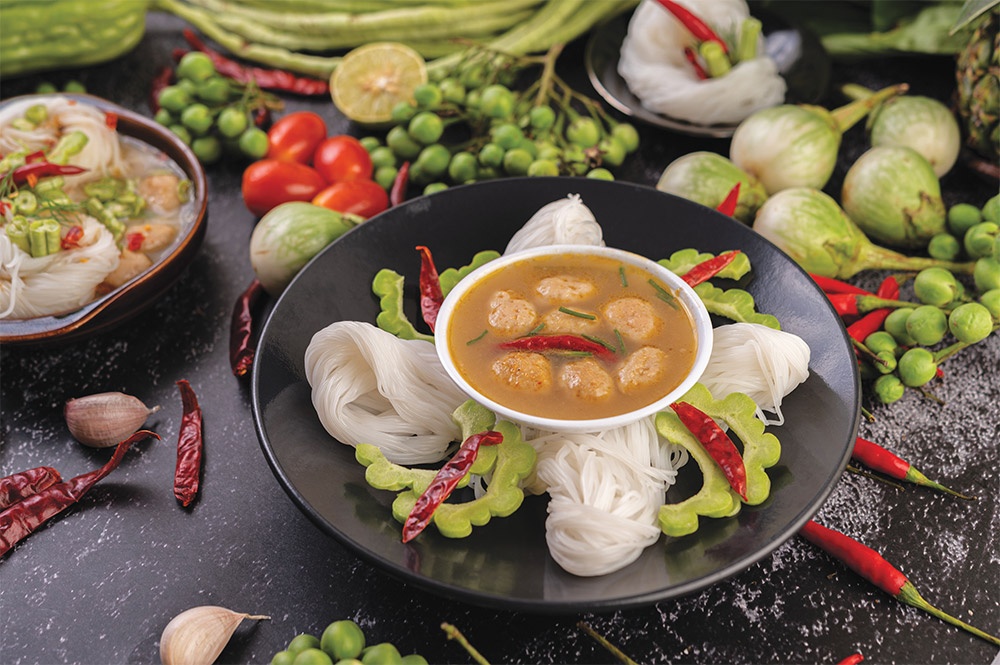Cuisine boosted by latest Michelin Guide
Some of the 164 dining establishments on this year’s Michelin Guide have reported an increase in customer traffic within just over a week since the release of the list.
According to The Royal Pavilion restaurant in Ho Chi Minh City, bookings have increased by at least 30 per cent compared to before, especially on weekends, with the restaurant consistently being fully booked.
The Royal Pavilion is among seven Michelin-starred restaurants in Vietnam in 2024 and the only restaurant to have been upgraded from Michelin Selected last year.
 |
Meanwhile, the Michelin effect has also helped My Hanh Seafood, a popular dining establishment listed as Michelin Selected in the central city of Danang, to consistently be fully booked.
Renowned chef Peter Cuong Franklin, owner of Anan Saigon, a restaurant that achieved Michelin Star awards in 2023 and 2024, said that the accolade has significantly increased the number of international patrons within months.
“Many tourists have made reservations months in advance before their trips to Vietnam even begin. After one year, the number of diners at Anan Saigon has still maintained a growth rate of approximately 20 per cent. We have also made changes and increased the prices of certain dishes on the menu to meet demand and ensure the quality of service for our guests,” said Franklin.
The Michelin Guide list, released at the end of June, covers 164 dining establishments in Hanoi, Danang, and Ho Chi Minh City, including seven restaurants with one Michelin star, 58 dining establishments with Bib Gourmand awards, and 99 recognised as Michelin Selected.
Compared to the 2023 rankings, the number of restaurants has increased in all categories, with no restaurants losing titles or stars. However, no restaurants have received more than one star.
Danang is newly added to the list this year, adding to the diversity and richness of choices in the list with its unique local specialities representing central Vietnamese cuisine. Meanwhile, the Michelin Green Star recognises sustainability and environmental practices, and for the first time, it has been awarded in Vietnam to a restaurant in Danang.
According to Ha Van Sieu, deputy director of the Vietnam National Authority of Tourism, culinary tourism is a strategic product in Vietnam’s tourism development strategy, along with heritage tourism.
“The Michelin Guide will empower and inspire restaurants to strive for excellence and contribute to improving the quality of tourism and culinary products,” Sieu said.
“The tourism industry has received positive feedback from tourists who have experienced Michelin Guide restaurants. The increasing number of certified dining establishments in Vietnam will help our national tourism brand shine and establish a strong position in the global tourism market,” he said.
The Vietnamese food and beverages market is on a trajectory of success, with expected revenues of over VND655 trillion ($26 billion) and on-year growth of 10.9 per cent in 2024, according to an iPOS.vn report.
René Marre, a restaurant and hospitality consultant, said that across the world, the Michelin Guide had strongly motivated awarded chefs to maintain their high standards and inspired others to improve their craft.
This motivation has led to a higher level of attentiveness, seriousness, and improvement in details among the leading restaurants, significantly lifting the sector.
Marre said, “Vietnamese restaurants should try to capitalise on their inclusion in prestigious rankings like the Michelin Guide, TimeOut, TasteAtlas, and Asia’s 50 Best Restaurants by promoting their achievements in advertising, and ensuring consistently high-quality service and innovation.”
According to the Michelin Guide, Singapore currently leads Southeast Asia with 51 Michelin-starred restaurants, followed by Thailand with 35, Malaysia with five, and Vietnam with four.
RMIT lecturer in Tourism and Hospitality Management, Dr. Pham Huong Trang, believes prestigious rankings and awards are important as they make Vietnamese food famous worldwide and attract more tourists.
“Working towards getting Vietnamese culinary arts recognised as a UNESCO intangible cultural heritage could significantly boost the country’s culinary profile. In the long term, establishing a Vietnamese food museum could create a permanent showcase for the country’s rich culinary heritage, serving both as an educational resource and a tourist attraction,” Trang said.
Not only does the Michelin Guide influence high-end restaurants, but it also brings attention from tourists and consumers to street food in Vietnam. From roadside stalls to small eateries, they have started to receive recognition from international guests thanks to the Michelin Guide.
Le Nguyen Hoan Long, president of the World Association of Master Chefs Vietnam Chapter, said, “Leveraging international recognition through marketing can attract a wider audience, while enhancing customer experiences with exclusive menus and chef collaborations is vital for sustained success.”
 | Michelin Guide’s role in stimulating culinary tourism Vietnam has been rated as having some of the best cuisine in Asia, especially when it comes to street food. Gwendal Poullennec, international director of the Michelin Guide, talked to VIR’s Hoang Oanh about the latest additions to the guide’s list for Vietnam this year and its impact on the country’s culinary culture and tourism. |
What the stars mean:
★ Poor ★ ★ Promising ★★★ Good ★★★★ Very good ★★★★★ Exceptional
Related Contents
Latest News
More News
- The Rhythm of Blues – Colours of the Year 2026 (December 06, 2025 | 12:10)
- Pan Pacific Hanoi kicks off 2026 art awards celebrating young and disabled artists (November 06, 2025 | 18:25)
- PREP AI Language Fair 2025 highlights AI-powered language learning (November 03, 2025 | 09:00)
- Hanoi strengthens rabies control and supports transition of dog and cat meat trade (October 28, 2025 | 18:09)
- World-famous Gaia Earth installation touches down at UNIS Hanoi (October 07, 2025 | 13:40)
- Sidecar passion drives Vietnamese motor enthusiasts wild (September 05, 2025 | 09:00)
- Sheraton Saigon unveils artistic mooncake collection for 2025 (August 08, 2025 | 09:00)
- 'Future Designers' contest spreads Vietnamese culture (August 06, 2025 | 14:20)
- Nestlé Vietnam implements NESTGEN 2025 to future proof young people (July 17, 2025 | 14:27)
- UNIQLO’s sustainability strategy behind the brand's global growth (June 23, 2025 | 15:42)

 Tag:
Tag:


















 Mobile Version
Mobile Version